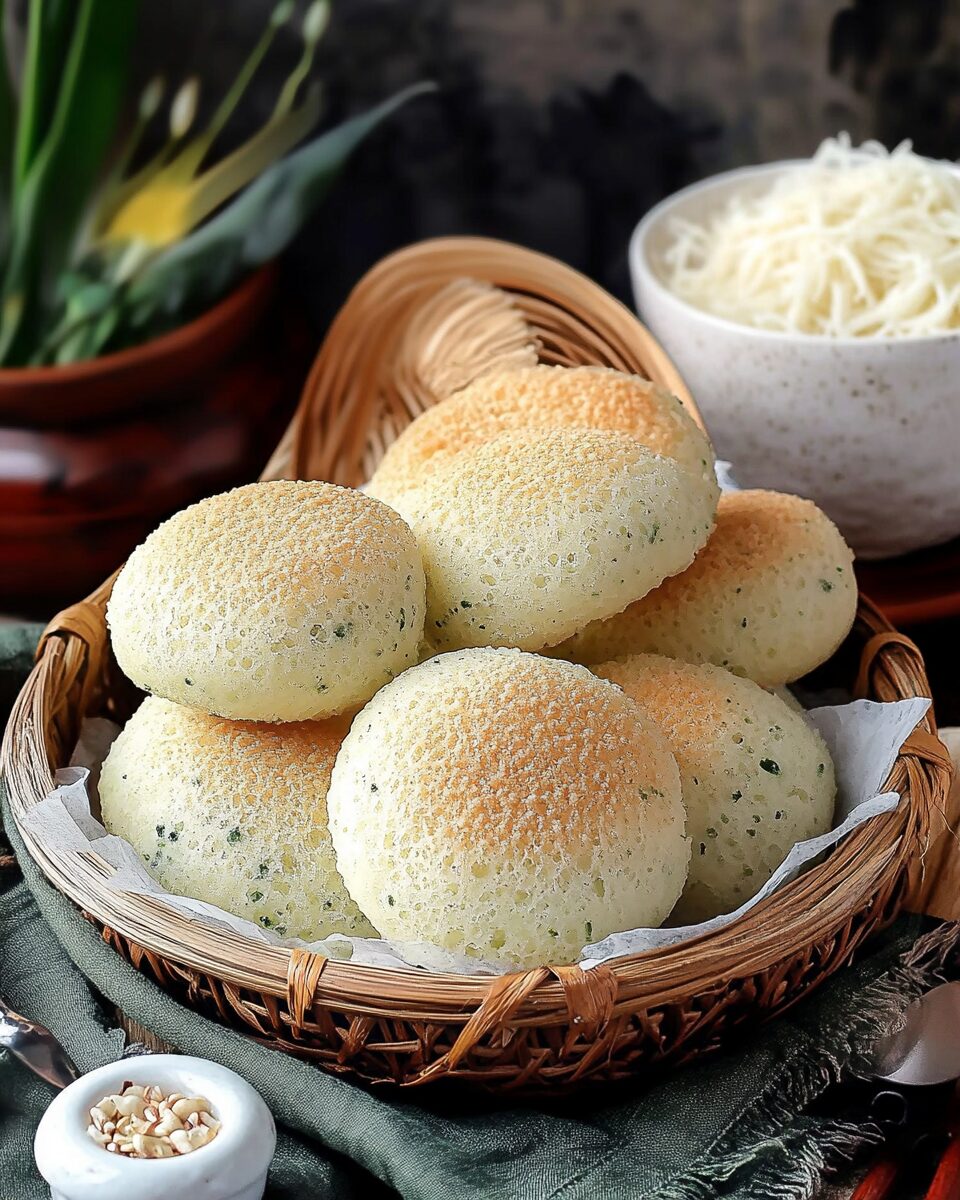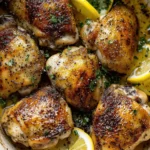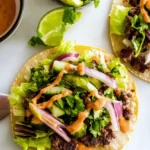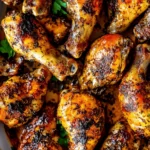Soft and airy pandesal infused with the nutritional benefits of malunggay (moringa) leaves, offering a healthier and tastier option for breakfast or snack time. This nutrient-packed bread pairs perfectly with a hot cup of tea or coffee.
FULL RECIPE:
Ingredients
- 1 cup malunggay leaves, washed and coarsely chopped
- 3 cups all-purpose flour
- ¼ cup sugar
- 1 teaspoon salt
- 1 medium egg, beaten (room temperature)
- 2 tablespoons oil
- 1 cup lukewarm water
- 1½ teaspoons instant dry yeast
- ¼ cup fine breadcrumbs
Directions
- Prepare the Malunggay Leaves: Wash the malunggay leaves thoroughly, pat them dry, and chop them coarsely.
- Mix Dry Ingredients: In a large bowl, combine the all-purpose flour, sugar, and salt. Add the chopped malunggay leaves and mix until evenly distributed.
- Add Wet Ingredients: Create a well in the center of the dry mixture. Add the beaten egg, oil, lukewarm water, and instant dry yeast. Mix until a dough forms.
- Knead the Dough: Transfer the dough to a lightly floured surface. Knead until it becomes smooth and elastic.
- First Rise: Shape the dough into a ball and lightly coat it with oil. Place it in a clean bowl, cover with plastic wrap, and let it rise until doubled in size, approximately 30 minutes to 1 hour, depending on room temperature.
- Divide and Shape: Gently deflate the risen dough and divide it into two equal portions. Roll each portion into a log and cut each log into eight equal pieces. Shape each piece into a ball.
- Coat with Breadcrumbs: Spread the fine breadcrumbs on a flat surface. Roll each dough ball in the breadcrumbs until fully coated.
- Second Rise: Arrange the breadcrumb-coated dough balls on a baking sheet, leaving space between each. Cover with a clean kitchen towel and let them rise until doubled in size, about 20-30 minutes.
- Bake: Preheat the oven to 185°C (365°F). Bake the risen dough balls for 15 minutes or until the sides turn golden brown.
- Serve: Remove from the oven and enjoy warm.
Nutrition Facts
- Calories: 137 kcal
- Carbohydrates: 25 g
- Protein: 4 g
- Fat: 2 g
- Saturated Fat: 1 g
- Polyunsaturated Fat: 1 g
- Monounsaturated Fat: 1 g
- Trans Fat: 1 g
- Sodium: 149 mg
- Potassium: 78 mg
- Fiber: 1 g
- Sugar: 3 g
- Vitamin C: 34 mg
- Calcium: 73 mg
- Iron: 1 mg
The Nutritional and Cultural Significance of Malunggay Pandesal
Malunggay pandesal is a modern take on the beloved Filipino bread roll, enriched with the powerhouse nutrition of malunggay leaves. This variation elevates the traditional pandesal not only in taste but also in health benefits. Malunggay, known scientifically as Moringa oleifera, has been widely recognized for its exceptional nutritional value and medicinal properties. Incorporating it into a staple food like pandesal makes it an easy and delicious way to consume more vitamins and minerals in everyday meals. Filipino households have long cherished pandesal as a breakfast staple, often enjoyed with coffee, hot chocolate, or a variety of spreads. It is a bread that represents comfort and nostalgia, baked fresh in neighborhood bakeries each morning. Over the years, people have found creative ways to improve its nutritional value, and adding malunggay is one of the most successful innovations.
The Health Benefits of Malunggay in Bread
Malunggay has earned the nickname “miracle tree” because of its incredible nutrient profile. It contains high levels of vitamins A and C, which help strengthen the immune system and improve skin health. Additionally, malunggay is an excellent source of antioxidants, which protect the body from oxidative stress and inflammation. Including this superfood in everyday meals can contribute to better heart health, improved digestion, and enhanced cognitive function. One of the most well-known uses of malunggay is its ability to support lactating mothers. The plant has been used for generations as a natural way to boost milk production, providing essential nutrients for both mother and child. Nursing mothers who consume malunggay-infused foods may experience an increase in their milk supply, making this bread particularly beneficial for postpartum care. Beyond its benefits for mothers, malunggay has also been found to have anti-inflammatory properties. Many chronic diseases, such as arthritis and diabetes, are linked to prolonged inflammation in the body. By incorporating malunggay into one’s diet, individuals may reduce their risk of developing these conditions or alleviate symptoms associated with inflammation.
A Healthier Alternative to Traditional Pandesal
While traditional pandesal remains a beloved breakfast option, its nutritional value is often compromised by the use of refined white flour and added sugar. These ingredients contribute to high carbohydrate intake, which can cause spikes in blood sugar levels. Malunggay pandesal, on the other hand, offers a more balanced nutritional profile, making it a healthier alternative for people who want to enjoy bread without the drawbacks of refined carbohydrates. In recent years, many people have become more conscious of their diet, opting for whole foods and natural ingredients over processed options. Malunggay pandesal aligns with this growing trend, as it allows individuals to enjoy a comforting and familiar food while still prioritizing their health. The added malunggay not only improves the bread’s nutritional content but also gives it a unique green hue, making it visually appealing and a great conversation starter at the breakfast table.
The Role of Malunggay Pandesal in Filipino Cuisine
Filipino cuisine is known for its resourcefulness, often incorporating locally available ingredients into traditional dishes. Malunggay has long been used in Filipino cooking, added to soups, stews, and even omelets for an extra nutritional boost. Its integration into pandesal showcases the adaptability of Filipino food culture, where traditional recipes are continuously reinvented to meet modern health needs. Many bakeries and home bakers have embraced malunggay pandesal as a staple, recognizing its growing demand among health-conscious consumers. Some variations even include additional nutritious ingredients, such as whole wheat flour or chia seeds, to further enhance the bread’s health benefits. The versatility of malunggay pandesal allows it to be enjoyed in various ways, from simple breakfasts to more elaborate sandwich creations.
Conclusion
Malunggay pandesal is more than just a delicious and satisfying bread—it is a nutritional powerhouse that provides numerous health benefits. By incorporating malunggay into a daily staple, people can effortlessly boost their intake of essential vitamins and minerals while still enjoying the familiar taste of pandesal. With its high fiber content, antioxidant properties, and ability to support immune function, malunggay pandesal is a fantastic alternative to traditional bread. It caters to a wide range of dietary needs, from nursing mothers to individuals managing chronic illnesses, and even children who need more greens in their diet. The rise in popularity of malunggay pandesal reflects a broader movement toward healthier eating habits without sacrificing the enjoyment of comfort food.






